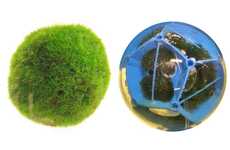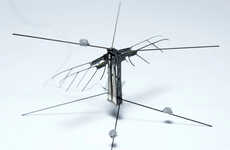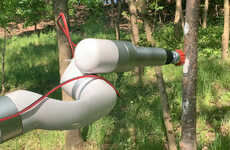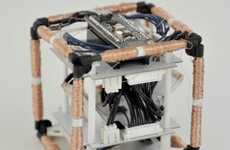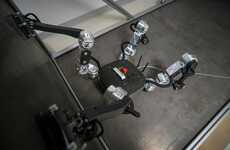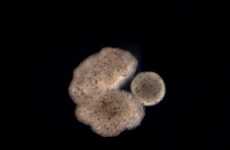
The Mars I-SWARM Project
TechnoGadget — October 22, 2008 — Tech
References: sciencedaily
The global population boom is just one of the driving forces to research Earth-like planets with the potential to support life. Researchers have gathered proof that there once was, or still could be, life on Mars. In fact, NASA alerted the White House regarding discoveries made by the Phoenix Lander, stating the red planet holds ‘potential for life.'
The Phoenix Lander confirmed there was frozen water at the landing site, yet the discovery is not surprising as water has been discovered on Mars several times. What’s new now is that the TEGA organic chemistry lab, and the MECA wet chemistry system, can detect current or past life with the aid of microscopes. Their theory is that if they can detect bacteria, there’s also life.
The discoveries of Earth-like soil and water on Mars led to the I-SWARM project. Marc Szymanski and his European research team developed tiny, autonomous robots that can work just like real ants.
Basically, a posse of about 100 centimeter-scale robots were made, and when sent out in swarms, the ant-sized micro robots form a research collecting army. Putting robotic ants in a real-world environment is based on the notion of colonizing Mars. With the aid of these robots, exploration will be made easy.
The Phoenix Lander confirmed there was frozen water at the landing site, yet the discovery is not surprising as water has been discovered on Mars several times. What’s new now is that the TEGA organic chemistry lab, and the MECA wet chemistry system, can detect current or past life with the aid of microscopes. Their theory is that if they can detect bacteria, there’s also life.
The discoveries of Earth-like soil and water on Mars led to the I-SWARM project. Marc Szymanski and his European research team developed tiny, autonomous robots that can work just like real ants.
Basically, a posse of about 100 centimeter-scale robots were made, and when sent out in swarms, the ant-sized micro robots form a research collecting army. Putting robotic ants in a real-world environment is based on the notion of colonizing Mars. With the aid of these robots, exploration will be made easy.
Trend Themes
1. Robotic Space Exploration - Creating tiny, autonomous robots that can work in swarms like real ants opens up new possibilities for space exploration and colonization.
2. Detection of Extraterrestrial Life - Advancements in organic chemistry labs and microscopy technology enable the detection of current or past life on Mars, expanding the search for extraterrestrial life.
3. Exploration Robotics - The development of centimeter-scale robots that can form swarms for research and exploration purposes holds promise for making exploration tasks more efficient and accessible.
Industry Implications
1. Space Exploration - The use of robotic swarms for space exploration can revolutionize the way we gather data and conduct research beyond Earth's atmosphere.
2. Microscopy Technology - Advancements in microscopy technology for the detection of bacteria and potential signs of life on Mars open up new opportunities for the development of innovative tools and equipment.
3. Robotics - The field of robotics stands to benefit from the development of autonomous swarming robots that can effectively perform tasks in real-world environments, including space exploration and beyond.
2
Score
Popularity
Activity
Freshness


